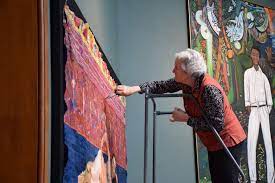New Generations of European Painting
 Throughout its history, European painting has shown a strong interest in capturing, reproducing, and representing images through painting. This interest has continued through the development of modern and contemporary art. It has also been affected by new media. As a result, painters have been interested in the ways in which images are affected by new technologies. These technological innovations include the development of television, computer, and the World Wide Web. These changes have changed the way in which we view and understand art. Checkout Painters Sarasota FL for more info.
Throughout its history, European painting has shown a strong interest in capturing, reproducing, and representing images through painting. This interest has continued through the development of modern and contemporary art. It has also been affected by new media. As a result, painters have been interested in the ways in which images are affected by new technologies. These technological innovations include the development of television, computer, and the World Wide Web. These changes have changed the way in which we view and understand art. Checkout Painters Sarasota FL for more info.
Since the 1980s, painters have been interested in the postmodern archive “fever.” This fever has been driven by the emergence of new media and digital evolution. The new media have democratized access to images. The World Wide Web has also functioned as a catalyst for collecting and re-collecting the culture of images. This interest in the postmodern archive has spawned the concept of New European Painting.
New European Painting is characterized by a new figurative stroke and an engagement with a shared history. This new form of painting represents a response to postmodern archives of images and trauma. The artists are interested in creating a new inner space through figuration and abstraction.
The first generation of European Expressionists largely focused on depicting Post-War trauma in Europe. They used personal images and photographs as art. These artists were often commissioned to create works for institutions or clients.
The second generation of European Expressionists has a strong interest in creating new forms of art that are based on photography and digital technology. New European Painting is part of a wider postmodern “archive” art movement that began in the 1980s. This movement has been driven by the emergence of new technologies and the distrust of images by society. The World Wide Web, television, and the computer have been credited with fostering the collection and distrust of images. The concept of New European Painting has reached a critical point of influence in the 1990s.